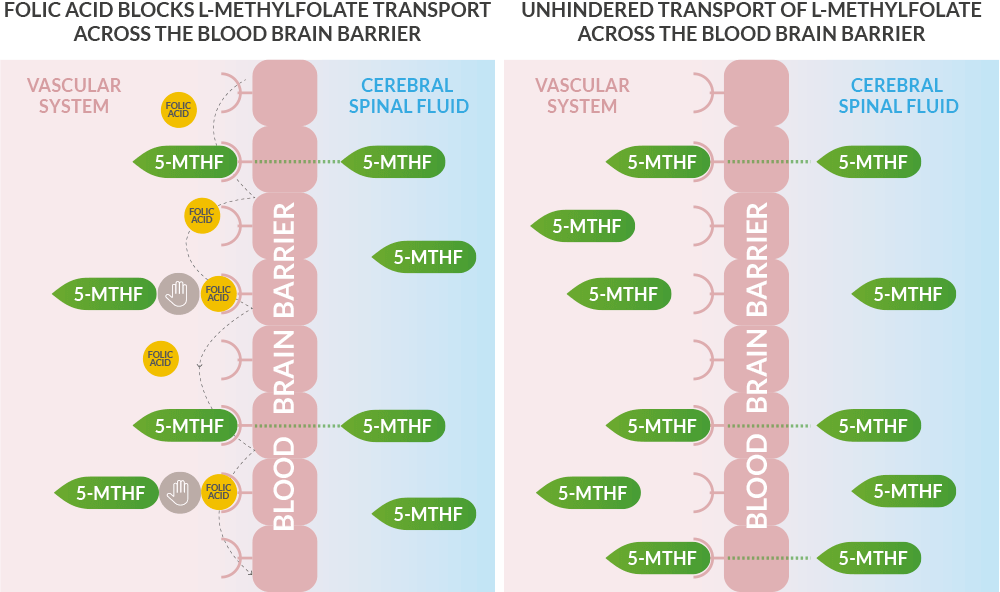Homocysteine level and mood disorders
Low levels of 5-MTHF contribute critically to reduced neurotransmitter levels in the cerebrospinal fluid and increased homocysteine levels, which are some of the main factors leading to the onset of mood disorders.
In 2000, Bottiglieri et al. studied the relationship between homocysteine, folate, and monoamine metabolism in patients with severe depression (https://pubmed.ncbi.nlm.nih.gov/10896698/).
Folate supplementation has been shown to reduce homocysteine accumulation and benefit mood balance and brain health.
People with polymorphism cannot convert folate into the active compound, the 5-MTHF.
MTHFR polymorphism impairs the biochemical transformation of other folates and synthetic man-made folic acid, making their intake or supplementation less effective. This mutation is the most common genetic cause of increased homocysteine levels.
5-MTHF, like Quatrefolic®, reduces homocysteine more effectively than folic acid because it is the only folate that crosses the ‘Blood-Brain Barrier’ (BBB) and can enter the brain directly without altering metabolism, and it can bypass the critical enzymatic step.
Quatrefolic® at the brain level: 5-MTHF vs. Folic Acid
In normal subjects, folic acid intake exceeding 200-300 μg/day results in the direct appearance of UnMetabolised Folic Acid (UMFA) in plasma. In individuals positive for the MTHFR polymorphism, UMFA may be amplified due to altered or slowed metabolism.
UMFA is a current concern due to its potential to cause toxic effects in the body.
UMFA cannot cross the Blood-Brain Barrier (BBB) in the brain and competes for cellular transport and blocking bound 5-MTHF uptake.
Reduced 5-MTHF transport can lead to low levels of the nutrient crossing the BBB into the cerebrospinal fluid, potentially resulting in a folate deficiency that may impact mood function.
Quatrefolic® offers proven advantages over folic acid by allowing more 5-MTHF to cross the Blood-Brain Barrier.

Discover in the video the key properties of Quatrefolic® supplementation, which offers protection against mood impairment through normalising the level of folate in all people, including those with MTHFR polymorphism.

